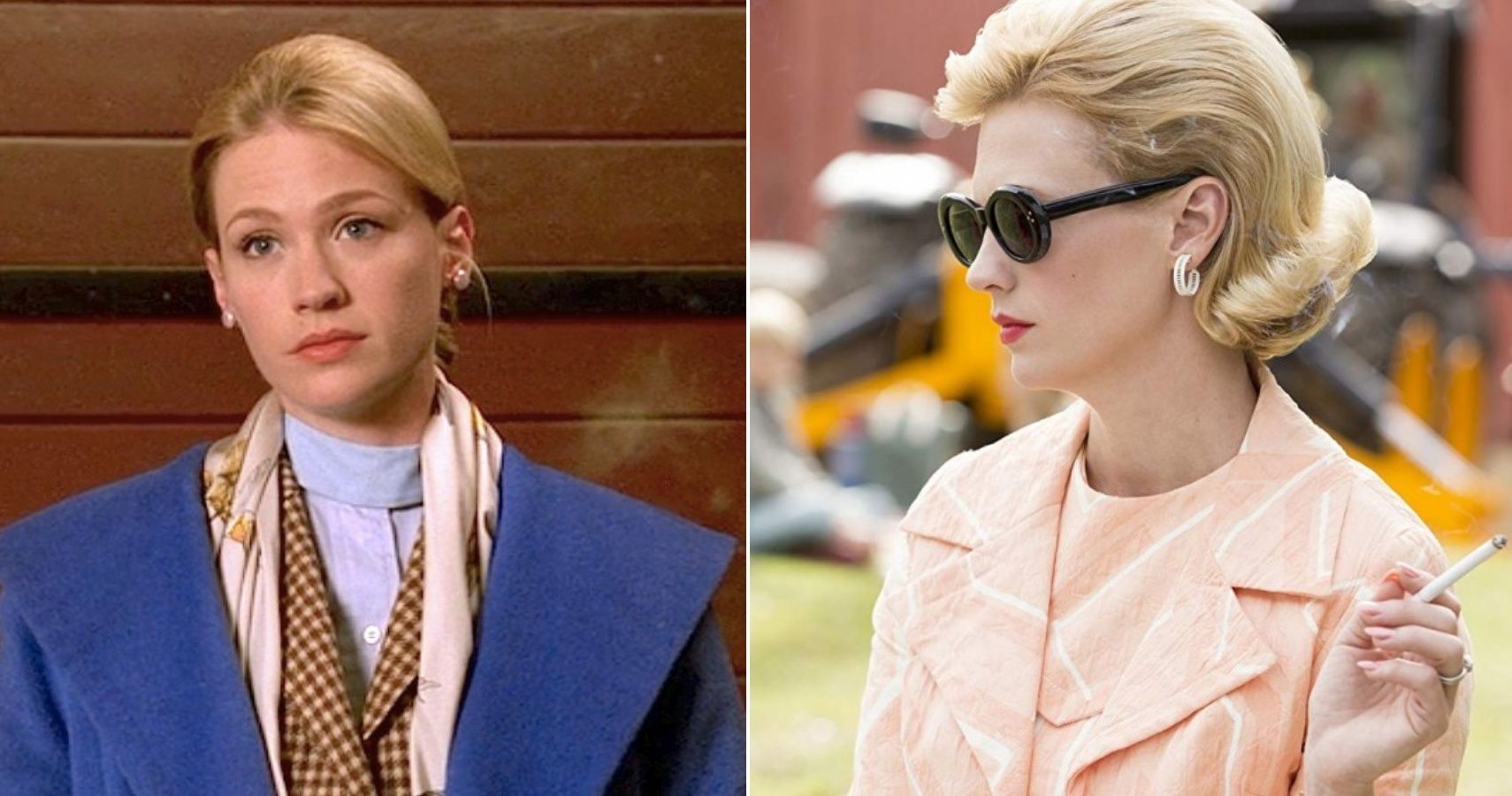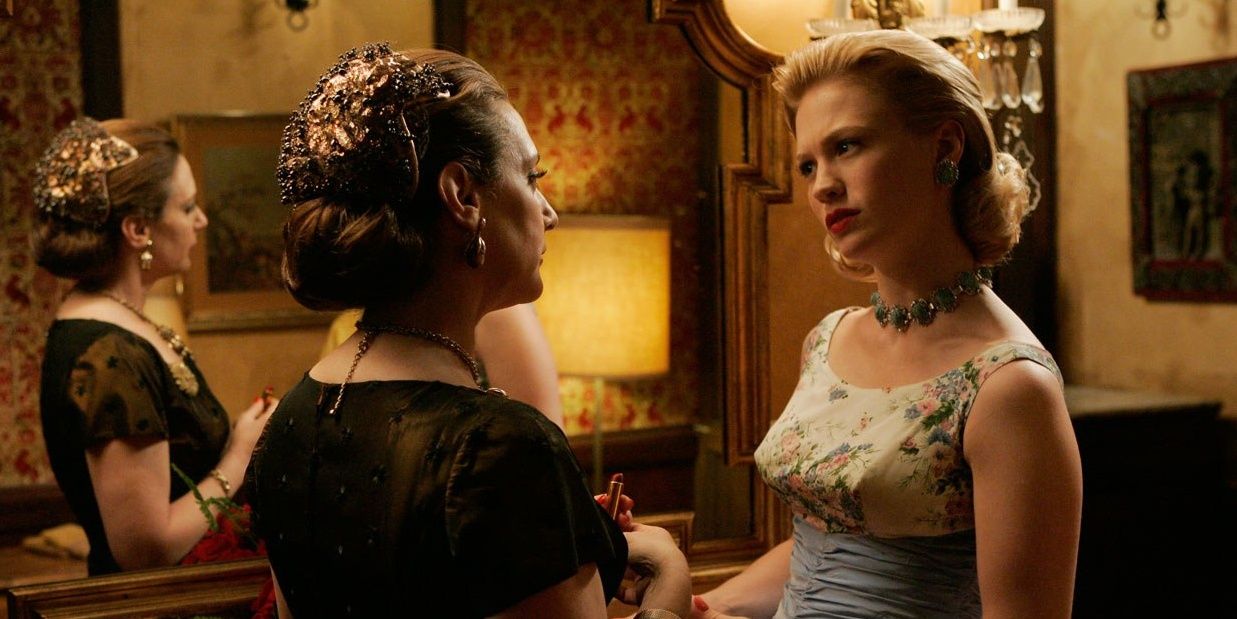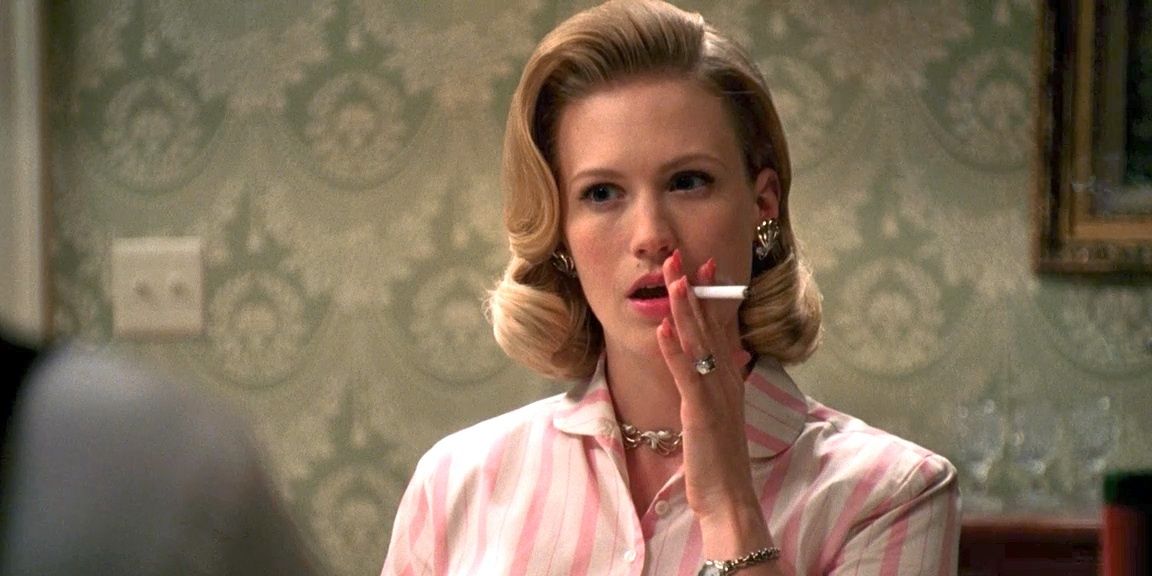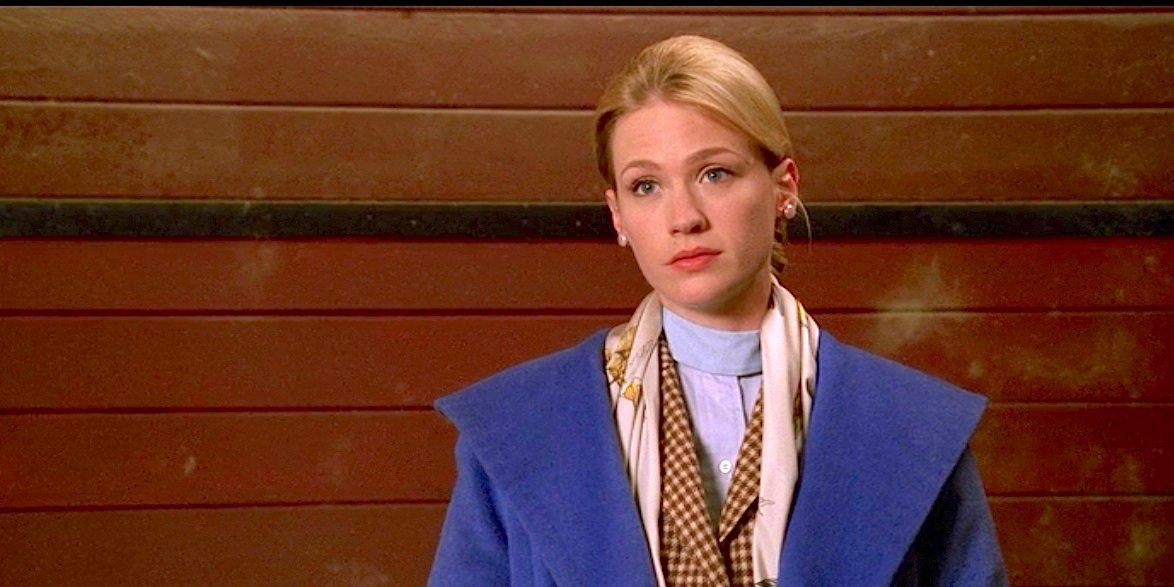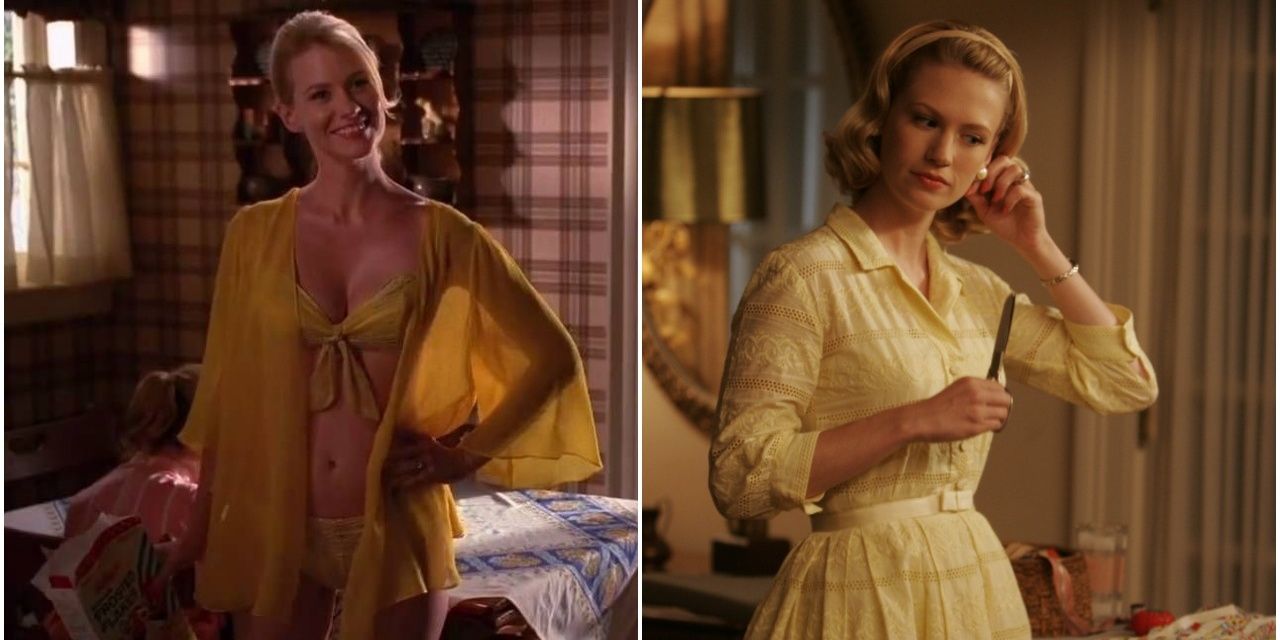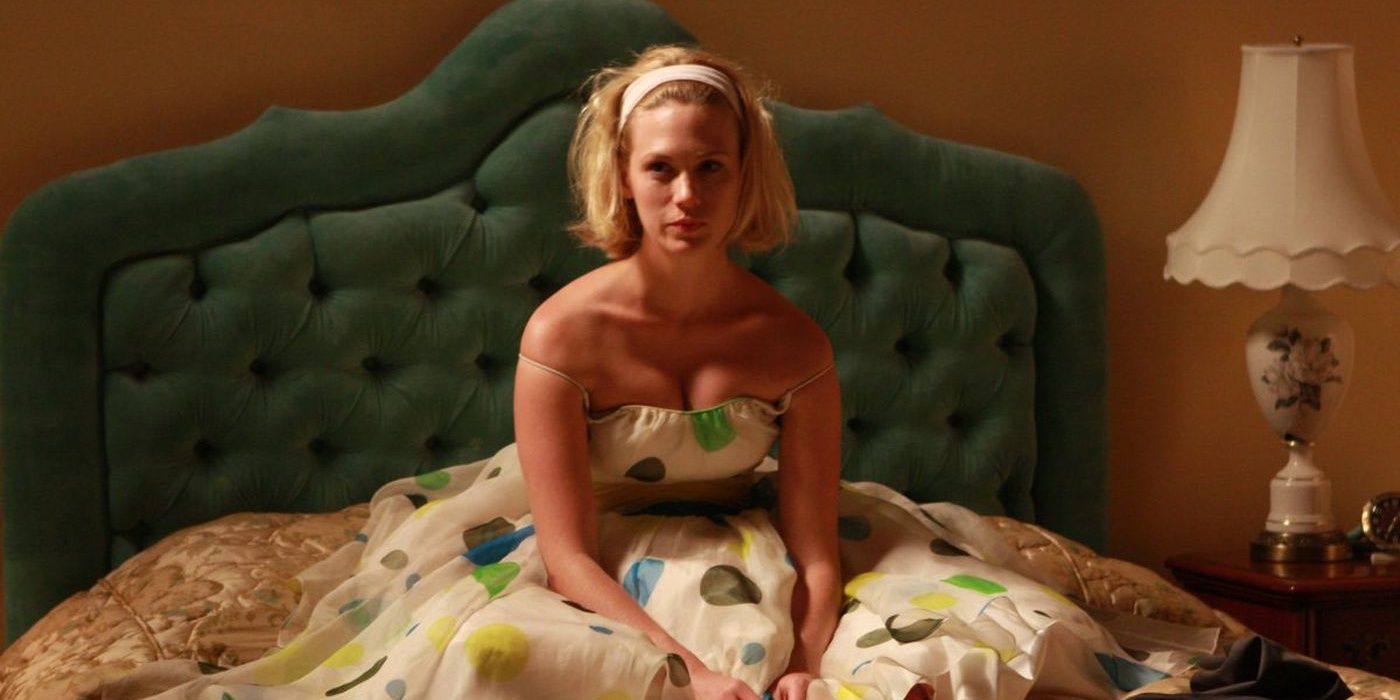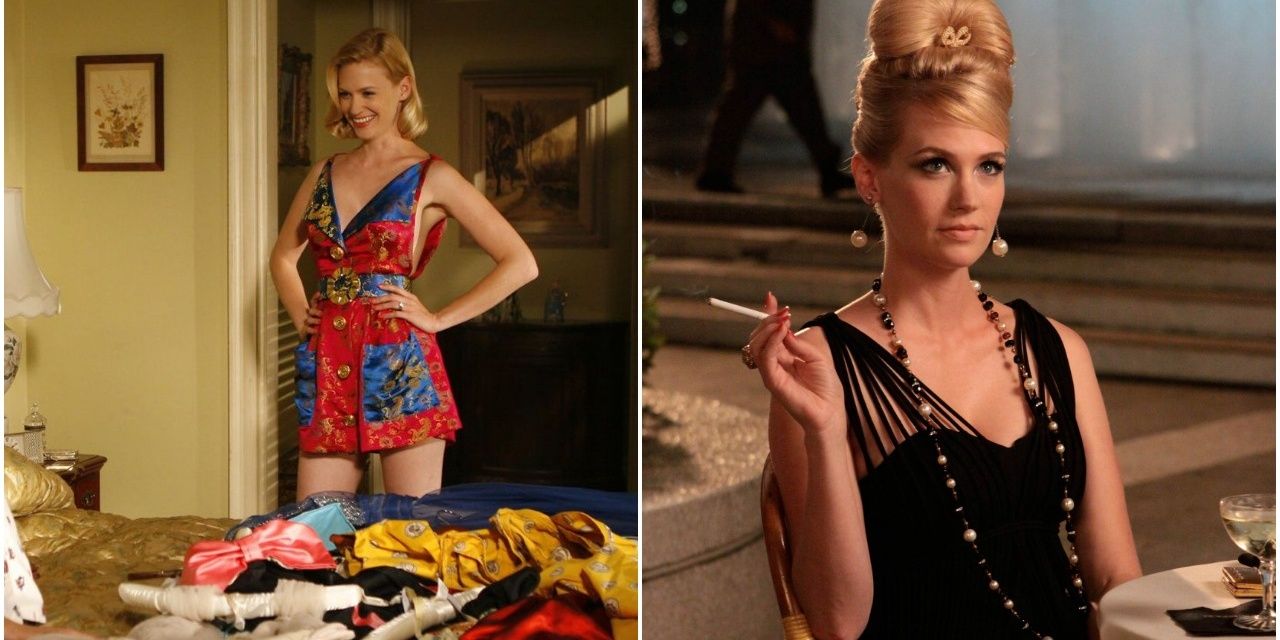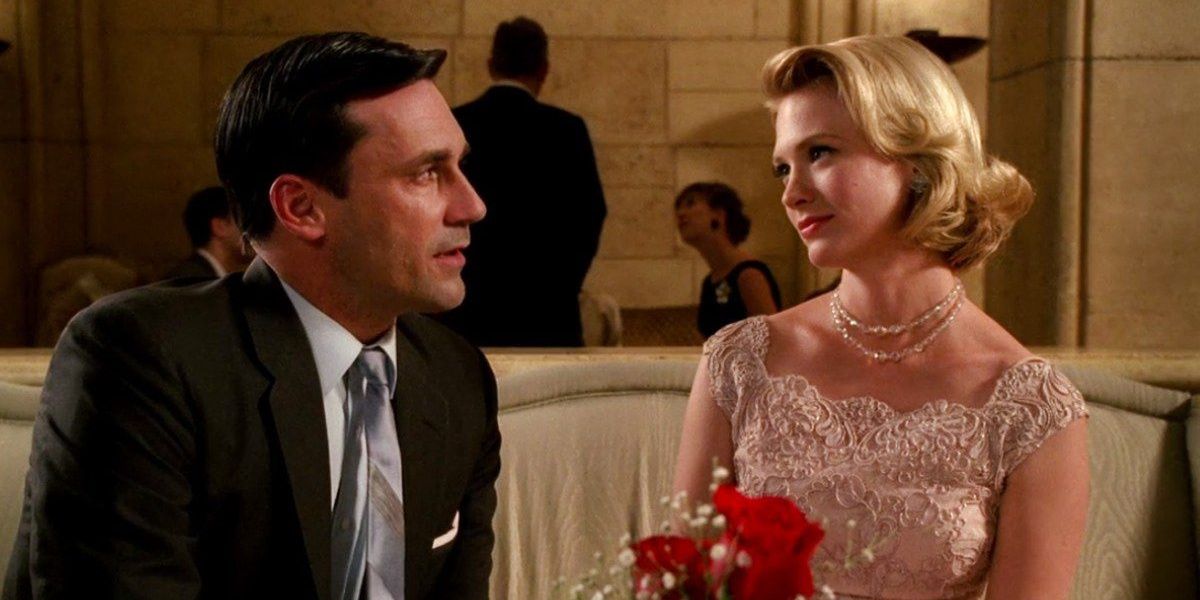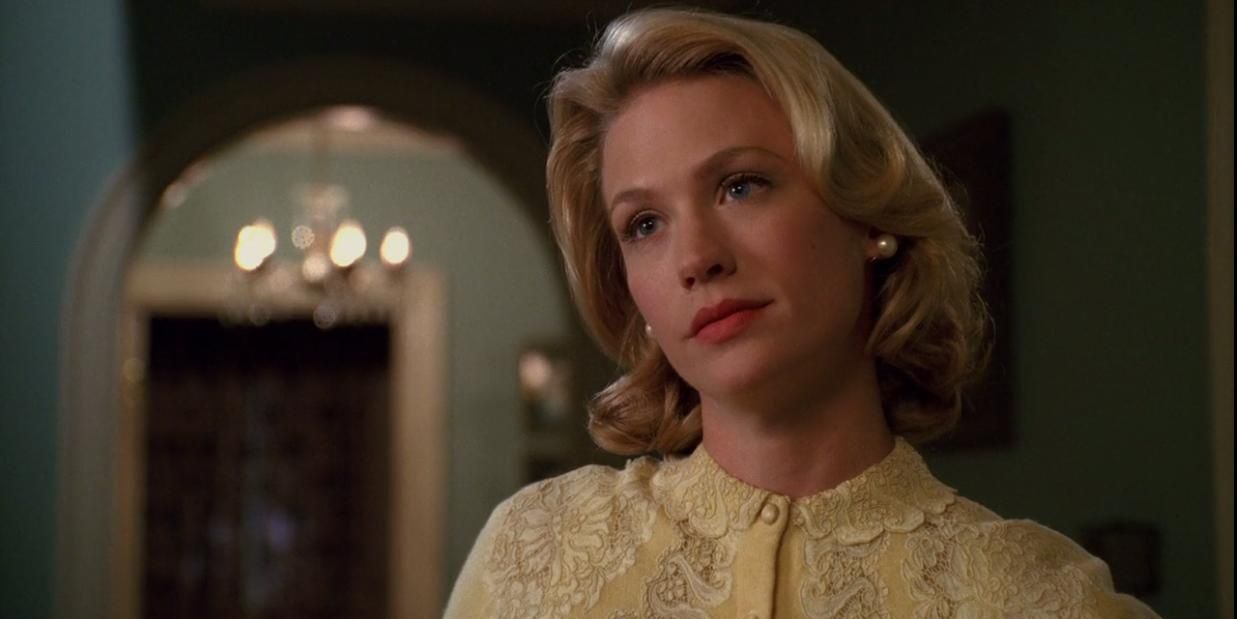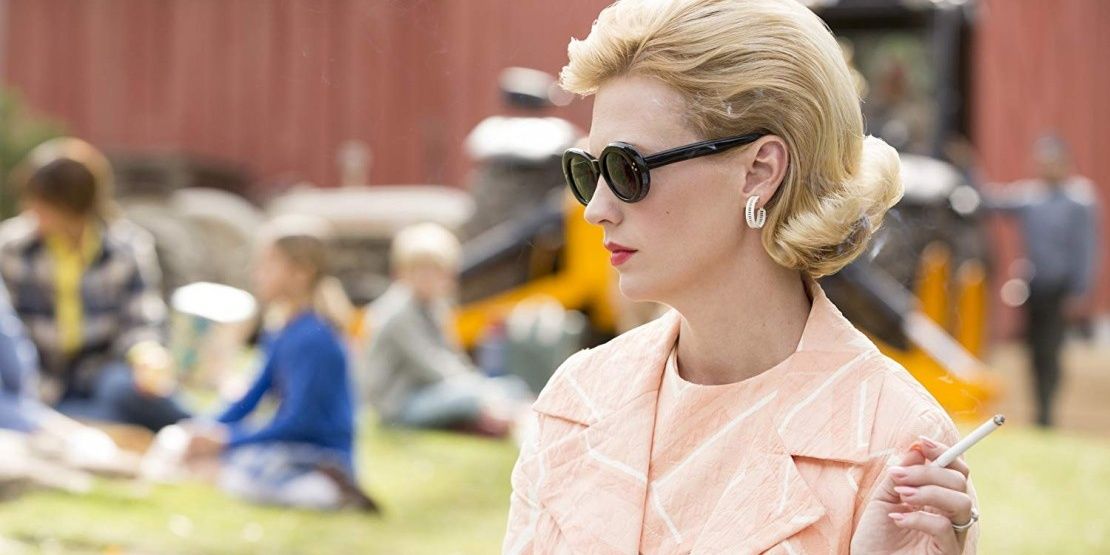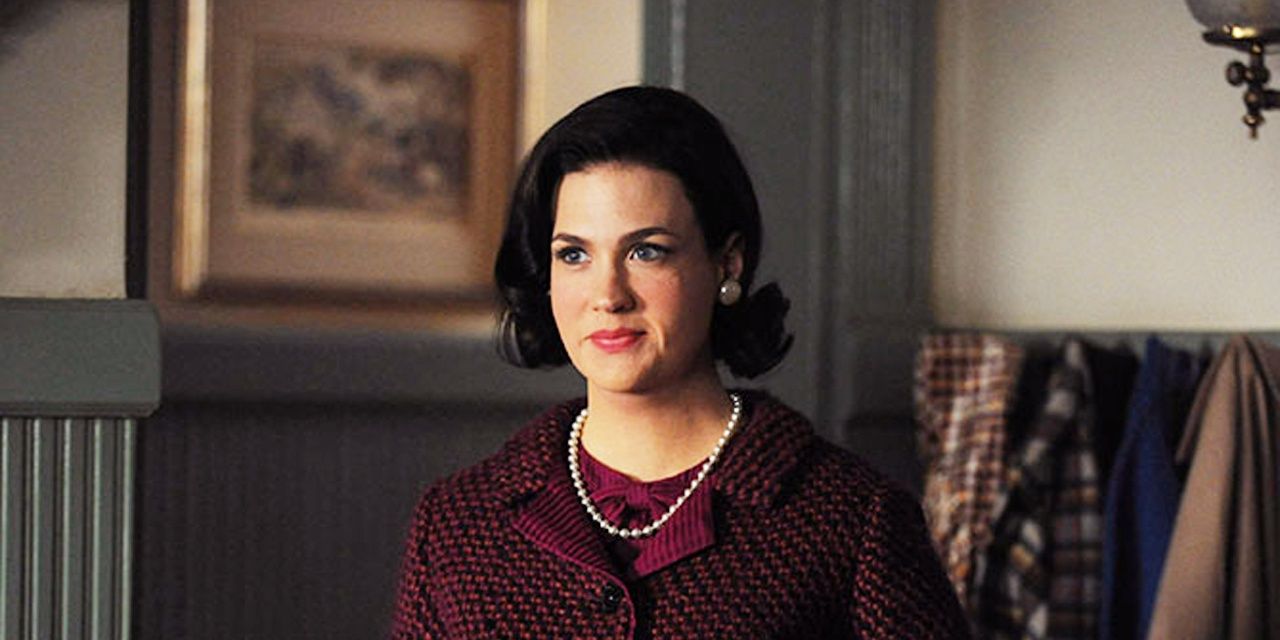Betty Draper Francis is Mad Men's original fashion plate and the quintessential 1960s suburban housewife, seemingly perfect on the outside but full of discontent underneath. With a philandering husband, derailed modeling career, and uneventful life in the suburbs, Betty put her eggs in the one basket she could control, her beauty.
It was true to her character that her final instructions for her funeral were appearance-based. Her final act of defiance was to leave the world on her terms: to continue looking beautiful and maintain that perfect facade in perpetuity.
Given how important appearances are to Betty, below are ten hidden details about her costumes that you probably didn't notice.
Grace Kelly Was An Inspiration
Betty was Mad Men's Grace Kelly, a calm and collected blonde who shared many similarities with the Hollywood actress. They were both born to wealthy, affluent families in a Philadelphia suburb and pursued a career in entertainment before settling down with their catch of a husband. In Kelly's case, she was an actress -- and the husband, a prince of Monaco. And while Betty was a model and did not land a prince, her handsome adman and idyllic suburban life were an excellent prize in the 1950s.
She Wore Classic Colors
The show's icy blonde, Betty was always wearing cool pastel colors, specifically pale pinks, blues, and yellows. Betty has an aristocratic bent with her equestrian hobby and patrician family background. She was also partially inspired by Grace Kelly, who retired from acting at age 26 to become a literal princess when she married Prince Rainer of Monaco.
Betty would always wear colors that made her look untouchable and unattainable. She would also avoid their conceptual opposite: the earthier tones that were popular in the 1970s. Ironically, her daughter Sally began to wear more of these 1970s greens and oranges as she grew up to show the emotional distance from her mother and their fraught relationship.
Blue Was A Prominent Color
In addition to Grace Kelly, costume designer Janie Bryant also thought of her grandmother when designing Betty's color palette. Both women wore saturated and icy blues reminiscent of their upper-crust East Coast backgrounds. This color manifested in Betty's wardrobe as a blue cashmere jacket. The first time we see her in this coat, she confesses to her divorced neighbor's son, Glen Bishop, about her loneliness looking lovely in the blue cashmere, which she paired with a silk scarf and black leather gloves. This scene is the essence of Betty's character: the loneliness and turmoil underneath the perfect facade.
Yellow Was Also A Theme Color
Mad Men fans remember Betty's yellow shirtdress that she wore while babysitting her neighbor's son, Glen Bishop. Yellow is a recurring color for Betty, who also wore it in a colorful swimsuit when she lost weight after having baby Gene, and during her final scene with Glen. When Betty is in yellow, she is feeling very confident and beautiful.
Betty's yellow chiffon gown that she wore in her first appearance after losing weight was a favorite of the costume designer. Bryant intentionally chose the yellow to contrast against the dark wood of the set, making Betty look luminous.
Her Costumes Showed Her Childlike Personality
In the first season of Mad Men, Betty is seeing a psychologist in Manhattan, with Don consulting the psychiatrist about their sessions together after hours. During one phone call, the psychologist divulges Betty's deepest secrets and tells Don that his wife had a petty and childish personality.
Betty's costumes lean into the characterization of Betty as both infantilized and childish with lacy gauze nightgowns and pastel-colored Barbie dresses. In the episode, "A Night To Remember," when Betty finally confronts Don about his affairs, she is wearing a white polka dot dress with a ball gown silhouette that is reminiscent of clowns at the circus or a child's birthday party.
Her Modeling Clothes Gave Us A Glimpse Of Her Life Before Don
Betty was an anthropology major at Bryn Mawr College in Pennsylvania. After graduation, she modeled in Italy and later in New York City before marrying Don. By the time Mad Men begins, Betty is almost a decade into her life as a suburban housewife, and we only see glimpses of her past life in the occasional costume she wears from her modeling days. There was the colorful romper she modeled for Francine, which represented her life before kids and was inspired by Venetian opulence. She also wore an elegant black dress with the beehive updo on her trip to Italy with Don.
She Was The Costume Designer's Favorite
Mad Men's lead costume designer, Janie Bryant, designed hundreds of costumes for every episode of the show, including costumes for both the lead characters and extras -- and she played favorites where costumes were concerned. Betty was one of Bryant's favorite characters to design for, as her character reminded her of her relatives in a similar stage of life. Bryant's fondness for Betty meant that January Jones also had the most fittings and wardrobe changes of all the characters on the show. The Season 1 episode, "Shoot," had 14 costume changes for Betty alone.
She Was Old Fashioned
Though always fashionable, Betty often appeared in costumes that were much too dowdy for someone still so young and beautiful. For much of the early seasons, her costumes were based on the A-line skirt and nipped waist of the perfect suburban housewife. It wasn't until she divorced Don and married Henry that she began to expand her wardrobe and wear more modern silhouettes, though they were still more conservative than the miniskirts and bright colors of Sterling Cooper's offices.
Her Costume Became More Conservative When She Married A Politician
After years of Don's philandering and neglect, Betty asked Don for a divorce and is on her way to Reno to finalize the paperwork with her children and new husband, Henry Francis, at the end of the third season. At this point in the show, Betty begins to dress for the part of a politician's wife. Her wardrobe becomes more conservative to reflect her new status, taking inspiration from fashionable women of the day, like Jackie Kennedy. She wears more tailored slacks and coat and dress ensembles tease her hair into a bouffant, and dons at least one strand of pearls in the morning.
"Fat Betty" Was More Than Just Prosthetics
Betty gains weight after giving birth to her third and youngest child, Gene. January Jones wore prosthetics to bulk up for Betty's new storyline. The costume showed Betty's discomfort with her body and the idea of no longer being young and beautiful. Janie Bryant saw this storyline as an opportunity to experiment with colors that Betty wouldn't usually wear. When Betty dyes her hair brown for more of an Elizabeth Taylor vibe than Grace Kelly, she is wearing a very un-Betty like berry suit.

